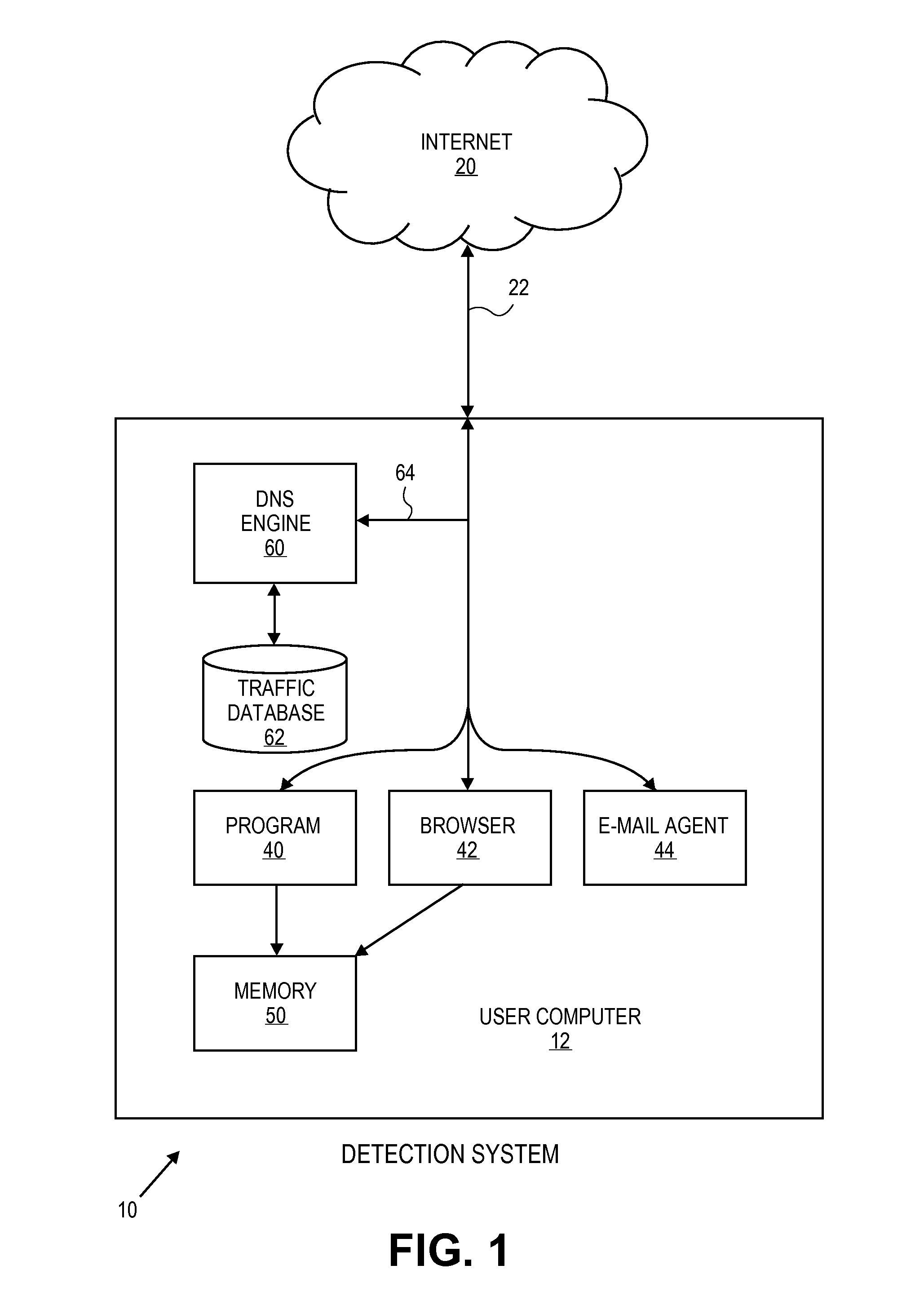Detection of downloaded malware using DNS information
a malware and information technology, applied in the field of malware detection on the computer, can solve the problems of more difficult to prevent and detect such malware, unusable software such as computer viruses, worms, spyware, etc., and achieve the effect of reducing the cost and pushing the cost to the client or host computer
- Summary
- Abstract
- Description
- Claims
- Application Information
AI Technical Summary
Benefits of technology
Problems solved by technology
Method used
Image
Examples
Embodiment Construction
[0016]The present invention is applicable to all malicious software, or malware, that generally causes harm to a computer system, provides an effect that is not expected by the user, is undesirable, illegal, or otherwise causes the user to want to restore their computer system from a time prior to when it was infected by the malware. Malware can be classified based upon how it executes, how it spreads or what it does. Commercially available so-called “anti-virus” software is designed to scan a computer for many types of malware, not only computer viruses. Of course, later developed software not currently known may also fall within the definition of malware. As used herein, the term malware includes viruses, worms, Trojans, backdoors, exploits, keyloggers, botware, grayware, spyware, and other undesirable software.
[0017]As explained earlier, it would be desirable to detect new malware or malware variants without needing to analyze samples of such malware beforehand. The inventive tec...
PUM
 Login to View More
Login to View More Abstract
Description
Claims
Application Information
 Login to View More
Login to View More - R&D
- Intellectual Property
- Life Sciences
- Materials
- Tech Scout
- Unparalleled Data Quality
- Higher Quality Content
- 60% Fewer Hallucinations
Browse by: Latest US Patents, China's latest patents, Technical Efficacy Thesaurus, Application Domain, Technology Topic, Popular Technical Reports.
© 2025 PatSnap. All rights reserved.Legal|Privacy policy|Modern Slavery Act Transparency Statement|Sitemap|About US| Contact US: help@patsnap.com



